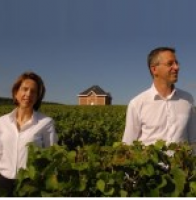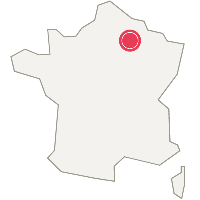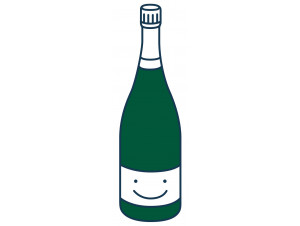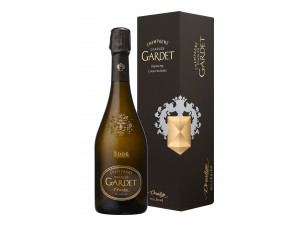You have no items in your shopping cart.
Champagne
Champagne AR Lenoble
(3 customer reviews)
This region, full of fabulous stories, is full of surprises... Here we are at the gateway to one of the most famous estates in the world: the AR Lenoble estate. With Grand Cru and Premier Cru vineyards, Anne and Antoine Malassagne (current owners) have implemented integrated viticulture and even obtained HVE certification...
Come and join us as we open the doors of AR Lenoble! Find out more
 Recommended by
Recommended byBettane et Desseauve avant 2020 - Wine Spectator - Parker Wine Advocate
-

Shipped in
secured packaging -

Garantie anti-casse :
Prise en charge totale
The winemaker
As you stroll through the red and gold hues that color the Champagne region in autumn, you may come across beehives... If so, you're probably on an AR Lenoble estate plot!
In 1870, an Alsatian by the name of Joseph Graser was forced to leave his native Alsace in the face of the advancing German army. His escape led him to Epernay, where he decided to settle among the vines. Following his sudden death, his son Antoine-Raphael took over as head of the family. In such an environment, winemaking seems to be a matter of course. While the name of the new domaine initially paid tribute to the recently deceased, it soon changed. AR from the name of its founder, Lenoble, to celebrate the nobility of Champagne wines.
In the course of its history, the family could have taken the easy way out and given in to one of the many takeover offers. But this choice of quantity over quality ran counter to the values and hard work of four generations. Today, siblings Anne and Antoine Malassagne run the estate with complete independence and freedom.
As a reminder, in Champagne, what we call a "Cru" actually refers to a commune, some of which are classified Premier or Grand Cru. This is the case for most of the parcels here. The estate's 18 hectares of vines are divided between Chouilly, a Côte des Blancs commune classified as a Grand Cru, and, not far from the Montagne de Reims, Bisseuil (classified as a Premier Cru). The HVE-certified vines are cultivated using integrated farming methods to promote soil life and biodiversity. The rest of the supply comes from partner winegrowers near Epernay, from whom the grapes are purchased.
In the 90s, the house was one of the first to adopt a parcel-based approach. By vinifying grapes from a single plot together, the aim was to restore the authenticity of a specific terroir. Today, however, the blending of grape varieties and parcels remains the norm at the estate.
The quest for excellence continues in the winery, where we work the old-fashioned way, using large wooden manual presses, for example. Then, depending on the desired style, the wines made with the year's harvests are vinified and aged in stainless steel vats, foudre or oak barrels.
The house's signature is its reserve wines, which benefit from a special ageing process. Each year, a portion of the year's wines is added to the "eternal reserve", a blend of wines from several previous vintages. This eternal reserve is aged in magnum for a minimum of 4 years before being blended with a wine of the year. Thus, a Champagne "mag" 15 will be made up of wine from the eternal reserve blended with the base wine of the year 2015.
AR Lenoble's champagnes therefore offer longevity through the years, but with that little "hand-sewn" taste that we invite you to discover as a matter of urgency!
A Champagne estate with Alsatian origins
In 1870, an Alsatian by the name of Joseph Graser was forced to leave his native Alsace in the face of the advancing German army. His escape led him to Epernay, where he decided to settle among the vines. Following his sudden death, his son Antoine-Raphael took over as head of the family. In such an environment, winemaking seems to be a matter of course. While the name of the new domaine initially paid tribute to the recently deceased, it soon changed. AR from the name of its founder, Lenoble, to celebrate the nobility of Champagne wines.
In the course of its history, the family could have taken the easy way out and given in to one of the many takeover offers. But this choice of quantity over quality ran counter to the values and hard work of four generations. Today, siblings Anne and Antoine Malassagne run the estate with complete independence and freedom.
A wide variety of plots
As a reminder, in Champagne, what we call a "Cru" actually refers to a commune, some of which are classified Premier or Grand Cru. This is the case for most of the parcels here. The estate's 18 hectares of vines are divided between Chouilly, a Côte des Blancs commune classified as a Grand Cru, and, not far from the Montagne de Reims, Bisseuil (classified as a Premier Cru). The HVE-certified vines are cultivated using integrated farming methods to promote soil life and biodiversity. The rest of the supply comes from partner winegrowers near Epernay, from whom the grapes are purchased.
In the 90s, the house was one of the first to adopt a parcel-based approach. By vinifying grapes from a single plot together, the aim was to restore the authenticity of a specific terroir. Today, however, the blending of grape varieties and parcels remains the norm at the estate.
The "mag" signature
The quest for excellence continues in the winery, where we work the old-fashioned way, using large wooden manual presses, for example. Then, depending on the desired style, the wines made with the year's harvests are vinified and aged in stainless steel vats, foudre or oak barrels.
The house's signature is its reserve wines, which benefit from a special ageing process. Each year, a portion of the year's wines is added to the "eternal reserve", a blend of wines from several previous vintages. This eternal reserve is aged in magnum for a minimum of 4 years before being blended with a wine of the year. Thus, a Champagne "mag" 15 will be made up of wine from the eternal reserve blended with the base wine of the year 2015.
AR Lenoble's champagnes therefore offer longevity through the years, but with that little "hand-sewn" taste that we invite you to discover as a matter of urgency!

4 wines available
between 38 € and 75 €
between 38 € and 75 €

51 wine's scans
on Twil application
on Twil application
You might like Voir tous les vins de la région
- -50%
- -27%
- -30%
- -16%




















 TWIL - Achat de Vin
TWIL - Achat de Vin


